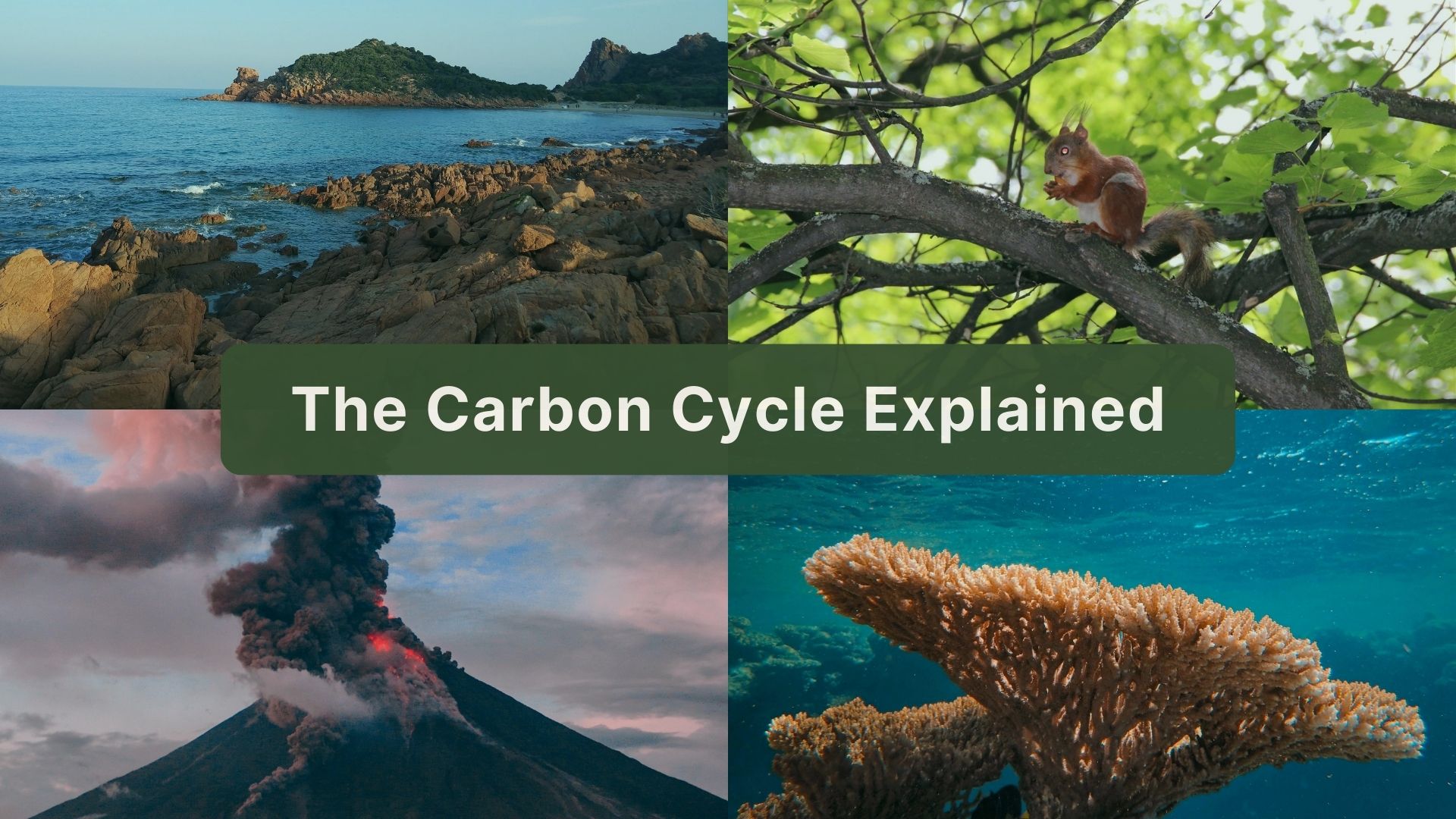Carbon Cycle: The Building Block of Life
Science

Carbon is a fundamental element of life on Earth. We are made of carbon, we consume carbon, and our civilization is built on carbon. Carbon is so abundant and constantly moving between reservoirs as a cycle. These reservoirs include hydrosphere (water above and under the Earth’s surface), atmosphere, lithosphere (land and rocks), and biosphere (living organisms). The carbon cycle can be divided into fast and slow cycles.
Slow Carbon Cycle
Carbon moves on 100-200 million year time scales between rocks, soil, ocean, and atmosphere. Key phenomena of the slow carbon cycle are:
- Weathering: Atmospheric carbon combines with water to form carbonic acid that falls to the lithosphere through rain. The acid dissolves rocks, releasing calcium, magnesium, potassium, and sodium ions into water bodies.
- Carbonation: Calcium ions react with bicarbonate ions present in the ocean to form calcium carbonate. This compound is used by shell-building organisms and planktons for building their skeletal structures.
- Sedimentation: After these organisms die, they sink to the seafloor. Slowly, they are cemented together into limestones and marbles which mainly contain calcium carbonate. Another kind of sedimentation process is when organic carbon is buried in layers of mud. Heat and pressure transform them into sedimentary rocks, oil, coal, and natural gas.
- Volcanism: When the Earth’s plates collide, one plate sinks and melts due to extreme temperature and pressure. The heated rocks turn into silicate materials and release carbon dioxide. These rocks and gases are vented into the atmosphere when volcanoes erupt.
Fast Carbon Cycle
In the fast cycle, carbon moves through life forms on earth (biosphere), hence taking the time based on lifespans. Carbon makes up a variety of complex organic molecules. Key phenomena of the fast cycle are:
- Photosynthesis: Plants and phytoplanktons absorb carbon dioxide and water, then convert them into sugar and oxygen utilizing energy from sunlight.
- Respiration: Plants break down sugar to get energy. In the process, carbon dioxide is released (the chemical reaction is the reverse of photosynthesis reaction). This process also happens when animals eat plants and planktons.
- Decomposition: Plants and planktons die and are eaten by bacteria. Carbon dioxide is released when bacteria perform respiration. This also includes when plants are burned.
The Threat of Climate Change
When the sun’s ultraviolet energy hits Earth’s surface, it is re-emitted in the form of infrared waves. Greenhouse gases such as carbon dioxide and methane absorb this infrared radiation, trapping it and warming the atmosphere. Any alteration in the cycle shifts carbon out of one reservoir and increases the amount of carbon in the other reservoirs. Changes that put carbon gases into the atmosphere lead to higher temperatures on Earth. For instance, deforestation will release carbon from the biosphere into the atmosphere.
Restoring forests is one way to maintain our planet’s carbon balance. Interested to take action? Visit our AtmosCheck page to learn more!
Reference:
Riebeek, H. (2011). The Carbon Cycle. NASA. https://earthobservatory.nasa.gov/features/CarbonCycle

